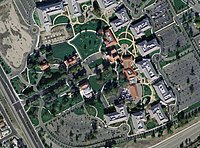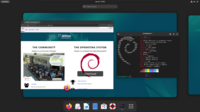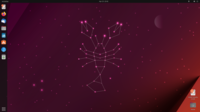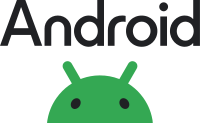-
Use Cases
-
Resources
-
Pricing
Linux Development
Onyx Systems starts selling early microcomputer-based Unix workstations
1980
% complete
Onyx Systems begins selling Unix workstations, contributing to the early development and adoption of Unix-based systems.
Image source: Onyx Systems

Sun Microsystems starts selling Unix-based desktop workstations
1982
% complete
Sun Microsystems, founded as a spin-off of a student project at Stanford University, starts selling Unix-based desktop workstations, further popularizing Unix.
Image source: Sun Microsystems

GNU Project aims to create a complete Unix-compatible software system
1983
% complete
The GNU Project, initiated by Richard Stallman, aims to develop a complete Unix-compatible software system composed entirely of free software.
Image source: GNU Project

Stallman starts the Free Software Foundation and writes the GNU GPL
1985
% complete
Richard Stallman starts the Free Software Foundation (FSF) and writes the GNU General Public License (GPL), a widely used free software license.
MINIX released by Andrew S. Tanenbaum
1987
% complete
Andrew S. Tanenbaum releases MINIX, a minimal Unix-like operating system designed for educational purposes.
Image source: Minix

Linus Torvalds enrolls in a Unix course at the University of Helsinki
1990
% complete
Linus Torvalds enrolls in a Unix course, sparking his interest in operating systems and eventually leading to the development of Linux.
Linus Torvalds attempts to obtain POSIX standards documentation
Jul 3, 1991
% complete
Linus Torvalds attempts to obtain a digital copy of the POSIX standards documentation, which inspires him to create his own operating system.
Image source: Linus Torvalds

Linux files uploaded to the FTP server
Sep 1991
% complete
The files of the Linux kernel are uploaded to the FTP server (ftp.funet.fi) of FUNET, making them accessible for development and collaboration.
Linux kernel released by Linus Torvalds
Sep 17, 1991
% complete
Linus Torvalds releases the Linux kernel, an open-source Unix-like operating system, marking the beginning of the Linux project.
First major film produced on Linux servers (Titanic)
1997
% complete
The film Titanic, released in 1997, becomes the first major film to be produced using Linux servers.
Image source: Linux

Trademark dispute settled in favor of Linus Torvalds
1997
% complete
Linus Torvalds and affected organizations settle a trademark dispute, resulting in the Linux trademark being assigned to Torvalds.
Red Hat Linux 7.1 contains 30 million source lines of code
2001
% complete
A study finds that Red Hat Linux 7.1 contains approximately 30 million source lines of code, representing a significant effort in software development.
Image source: Red Hat Linux

North Korea's Red Star OS based on Fedora Linux
2002 - Present
% complete
North Korea develops the Red Star OS, based on a version of Fedora Linux, for use in their country.
Image source: Red Star OS

LLVM project provides an alternative open-source compiler
2003
% complete
The LLVM project is released, providing an alternative cross-platform open-source compiler for many programming languages.
Image source: LLVM

Debian version 4.0 contains close to 283 million source lines of code
2007
% complete
A study estimates that Debian version 4.0 contains close to 283 million source lines of code, highlighting the scale of development and collaboration in the Debian project.
Image source: Debian

Linux distributions contain GNU components
May 2011
% complete
Linux distributions, such as Ubuntu, contain GNU components, with approximately 8% to 13% of the lines of code in Ubuntu being attributed to GNU.
Image source: Ubuntu

Database of tested hardware configurations launched
2014
% complete
An initiative is launched to automatically collect a database of all tested hardware configurations, aiding compatibility and hardware support in Linux.
Linux kernel development primarily done by paid developers
2017
% complete
Analysis shows that over 85% of the Linux kernel code is developed by paid developers, with the remaining contributions coming from unpaid developers.
Wayland display server protocol gains adoption
2022
% complete
Wayland, a display server protocol intended as a replacement for X11, gains relatively wide adoption in the Linux ecosystem.
Image source: Wayland (protocol)

Linux Market and Adoption
Linux holds 12.7% of the overall server market
1 Jan 2007 - 31 Mar 2007
% complete
Linux holds 12.7% of the overall server market, based on the number of Linux servers sold by various companies.
Linux-based Android responsible for over 60% of tablet sales
2013
% complete
Android, based on Linux, is responsible for over 60% of tablet sales, solidifying its dominance in the tablet market.
Linux dominates web servers with a market share of 96.55%
May 2015
% complete
Linux holds a dominant market share of 96.55% in web servers, with Windows and FreeBSD accounting for 1.73% and 1.72% respectively.
Linux dominates general-purpose operating systems
May 2022
% complete
Linux, including Android, achieves the largest installed base among all general-purpose operating systems, primarily due to the dominance of Android on smartphones.
Linux market share on desktop computers estimated at around 2.5%
May 2022
% complete
Linux has an estimated market share of around 2.5% on desktop computers, while Windows and macOS dominate with approximately 75.5% and 14.9% respectively.
Android becomes the most widely used mobile operating system
Apr 2023
% complete
Android holds a market share of 68.61% of mobile devices accessing websites, making it the most widely used mobile operating system.
Image source: Android (operating system)

Linux operating system market size expected to reach $15.64 billion by 2027
2027
% complete
The Linux operating system market size is projected to grow by 19.2% and reach $15.64 billion by 2027, compared to $3.89 billion in 2019.
Linux in Server and Supercomputing
Linux leads in servers, mainframes, and supercomputers
Nov 2017
% complete
Linux becomes the leading operating system on servers, mainframes, and supercomputers, with over 96.4% of the top 1 million web servers' operating systems being Linux.
Linux in Education
Chromebook dominates the US K-12 education market
Nov 2022
% complete
Linux-based Chromebooks, running ChromeOS, dominate the US K-12 education market, capturing nearly 20% of sub-$300 notebook sales.
Image source: Chromebook

Key Facts
- Linus Torvalds created Linux as a free and open-source operating system in 1991.
- The first version of Linux, known as Linux 0.01, was released in September 1991.
- The GNU General Public License (GPL) was adopted for Linux in 1992, ensuring its free distribution and modification.
- In the 1990s, Linux gained popularity among computer enthusiasts and was embraced by the open-source community.
- Today, Linux is widely used in various industries, from web servers and supercomputers to smartphones and embedded systems.
Source
This Linux timeline was generated with the help of AI using information found on the internet.
We strive to make these timelines as accurate as possible, but occasionally inaccurates slip in. If you notice anything amiss, let us know at [email protected] and we'll correct it for future visitors.
Create a timeline like this one for free
Preceden lets you create stunning timelines using AI or manually.
Customize your timeline with one of our low-cost paid plans
Export your timeline, add your own events, edit or remove AI-generated events, and much more
Free
$
0
free forever
No credit card required.
Basic
$
10
/month
billed annually
Cancel anytime.
Pro
$
16
/month
billed annually
Cancel anytime.
Common Questions
Can I cancel anytime?
Yes. You can cancel your subscription from your account page at anytime which will ensure you are not charged again. If you cancel you can still access your subscription for the full time period you paid for.
Will you send an annual renewal reminder?
Yes, we will email you a reminder prior to the annual renewal and will also email you a receipt.
Do you offer refunds?
Yes. You can email us within 15 days of any payment and we will issue you a full refund.
What if I have more questions?
Check out our pricing docs or send us an email anytime: [email protected].